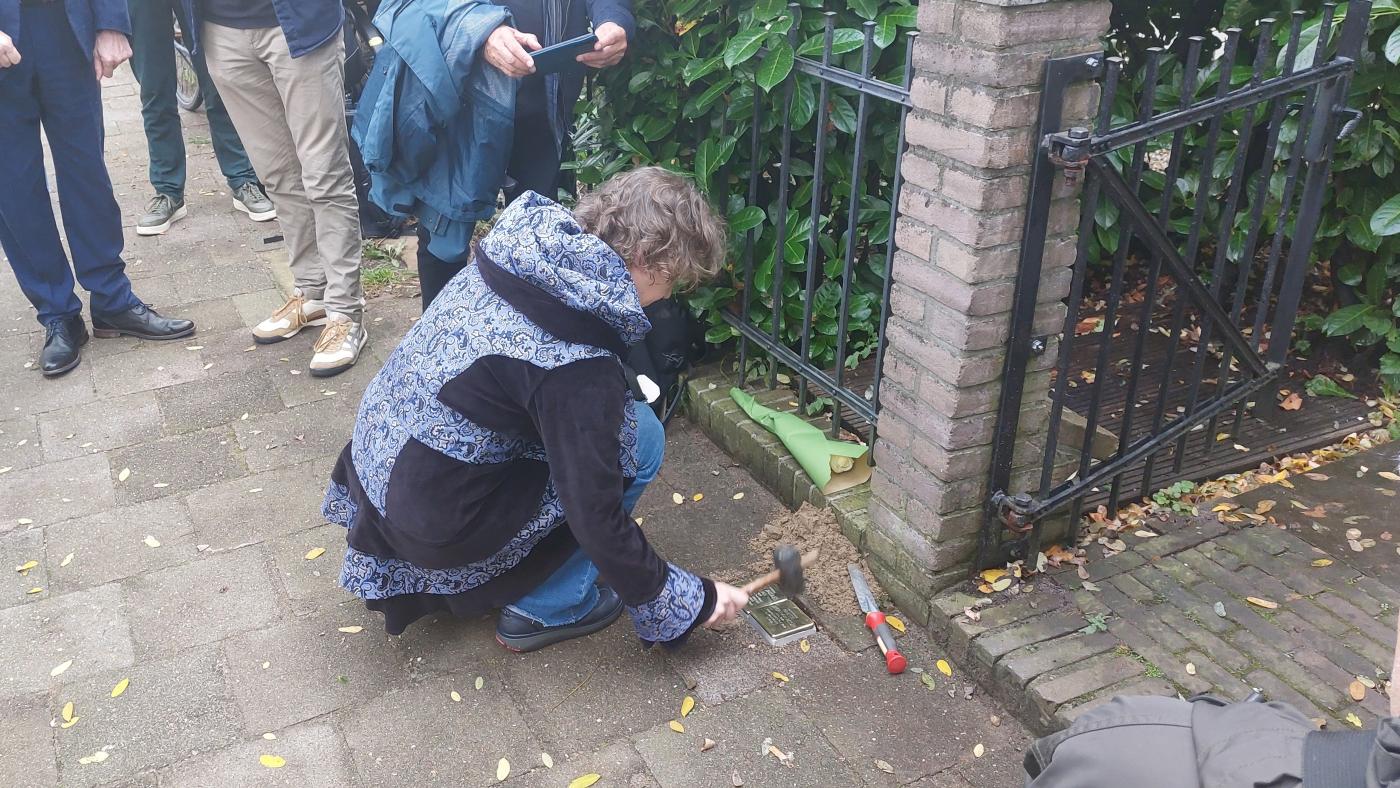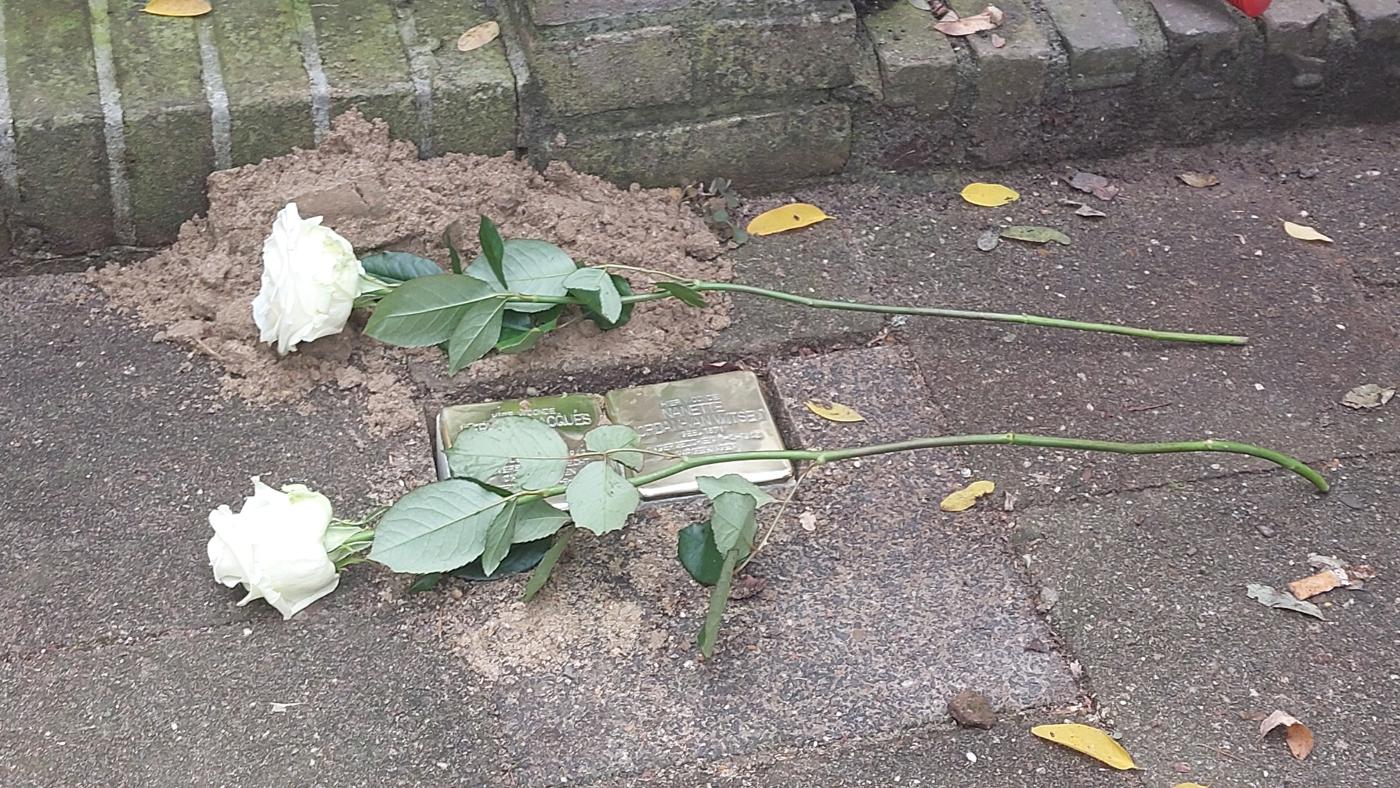Second World War
Jewish professor forced to leave his job gets commemorative cobblestone

The memorial stones were unveiled by UU Rector Henk Kummeling and the granddaughter of a Utrecht-based scientist who was supervised by Hermann Jordan. Memorial stones are brass plaques placed on the pavement in front of the houses where victims of the Nazi regime used to live. The people hommaged include Jews, Sinti, Roma, disabled people and gay people.
Jordan worked at UU from 1919 to 1 April 1943. He was a professor of comparative animal physiology. He was forced to resign and hide because of his faith. He died of a cerebral haemorrhage on September 21, 1943. His wife Nanette van Witsen survived the war and died in 1959.

The two memorial stones. Photo: DUB
Painful moments in history
It is important for the university community to “take the time to reflect on ourselves and the positive things we do, but we should also reflect on the bad and painful moments in history”, said Kummeling before the stones were laid on the pavement. UU is investigating its colonial past as part of these efforts.
“Younger people and students should take the time and effort to reflect on inclusion and exclusion nowadays”, the rector added. He was referring to “the terrible conflict going on in the Middle East, including in Gaza. People no longer want to talk to each other because they come from different backgrounds.”
Lectures on inclusion and exclusion
Before the stones were unveiled, lectures on inclusion and exclusion were held at Utrecht University. The symposium was organised by the UU History Working Group, which draws attention to the university's history as a countdown to the university's four-hundredth anniversary in 2036.
This is not the first time the university has collaborated with the Stolpersteiner Foundation, which is responsible for laying these memorial stones. Students from the Bachelor's programme in German Language and Culture have researched victims of the Nazi regime in Utrecht, talking to their relatives and to the people who currently reside in the houses where the victims used to live. The results were shared with the foundation, allowing it to place the memorial stones in front of the right houses.